QuestionQUESTION: I saw another question where someone in Columbus Ohio found a lizard in their living room. Today my son found a tiny lizard, around 2 inches, at a furniture store about 20 miles east of Columbus. I had checked the Ohio Dept of Natural Resources website and none of the native species even remotely resembles the lizard we found. We assumed it came in with some cargo and didn't belong around here. It is very tiny and mostly brown. It seems to have some darker spots but he is so tiny, they are barely visible. The ridge on his back seems to be lighter color. I read some other websites where someone suggested fruit fly's. This seems to be about the size of something he could eat. Any suggestions on what he is or what to feed him (from a pet store, I don't know how many fruit fly's I'll be able to catch around the fruit bowl!).
ANSWER: Tiny crickets bought at a pet store will work as well. There are herpetological societies located in Dayton and Cincinnati that you may want to contact. A lot of furniture is imported or shipped from the south, you may have an anole but getting advice from local experts who can actually see the lizard would be best. Also they will know all the reptile rescues in your area if you are not looking for that kind of pet.
---------- FOLLOW-UP ----------
QUESTION: Thanks for your reply. My husband seems to think it is a Brown Anole. He is really tiny. His head and body together are about the length of the end joint of my pinky and less than half the width. Is he a baby?
I resuced him because I assumed he was not native to our area and wanted to save him. I didn't want to turn him loose if he would not live in the wild here. What can I do with him for the night to keep him from dying. I found him in an air conditioned building, but I don't know how long he was there. Is he ok inside our house with the air conditioning on? Or do I need to put him under a light or something? I will check into a reptile rescue. I wasn't looking for a new pet, but he is so cute I didn't want to leave him there if he wouldn't live.
ANSWER: Ok, I can give you a general caresheet for him. Brown or Cuban anoles have made their home in Florida. For now a household bulb will warm him during the day, but he should be okay overnight if you keep the air conditioning in the 70's.
Basic Anole Care
Adult anole size is up to 9 inches.
Males generally have a larger dewlap than females. Males are larger than females. Males have a brighter, larger red throat,Females MAY keep the stripe down their back. Mature males have a hemipenes bumps on either side of their tail base.I believe anoles are considered mature when they reach about 5 inches snout to tail tip length.
TEMPERATURES:
They need a basking area temperature gradient of 85-92 degrees. These temperatures are needed to properly digest their foods. The basking area is one area of their cage. The overall or ambient temperature of their tank gradient upper 70-s to 80 degrees. 75 degrees for a cool area. Temperatures of 65-75 at night is fine. NEVER use heat rocks or heat caves for Anoles!! They malfunction and will cause death to the anole.
LIGHTING:
Anoles need UVB, which is the special lights
that come in fluorescent tubes
UVB is needed by the anoles
to be able to absorb the calcium in the foods they eat.
With out the uvb, they will develop metabolic bone disease.
With the tubes, they must say that they produce BOTH uvb and
uva. The uvb needs to be 5% or higher. Repti Sun 5.0 are
one of the best uvb tubes on the market. The repti glo 8.0's are testing out to be a great uvb source also.There are tubes
that say ''full spectrum'' but they do not produce any uvb.
These need to be positioned 6-8 inches over the anole so
that they get the uvb that is needed. The tubes need to be replaced every 6-9 months as that they stop producing uvb long before they stop producing light.
For daytime heat, if using the tube uvb, regular household
incandescent lightbulbs produce heat. The wattage will
depend on the size of your anoles enclosure. At night you need to provide a heat source in the form of a ceramic
heat emitter(which can also be used during the day) or a
special nighttime bulb(red or deep purple) that does not
produce any bright white light if the temperatures drop below the recommended night temperatures.
DIET:
Anoles eat daily. They are insectivores. Their food must not be too big for them (no larger than 1/2 the size of their head. All insects that are fed to them must be properly gut loaded for at least 48 hours before feeding them. Crickets, silk worms,trevo worms, wax worms are all part of their varied diet. Many will even eat babyfood fruits and possibly the meats. They are used as treats(once or twice a wk) and are wonderful for hydration. The Gut loading is feeding the insects a nutritious diet prior to feeding the insects to the anoles. This can be accomplished with feeding a recommended "diet" for the insect. ( http://www.anapsid.org/feedingbugs.html ) The crickets can be fed vegetables and cereals. Chicken laying mash is a good choice of food for the crickets as are other commercial foods designed for crickets.Their food needs to be dusted with calcium powder (rep cal calcium with no added phosphorus or vitamin D3 is a good brand) two times a week. Some may eat a bite or two of fruit. A vitamin should be used once a week. Rep Cal Herptivit is a good brand. Be sure to remove any crickets your anole has not eaten after 20 minutes or so to prevent the crickets from nibbling on your anole. Keeping your crickets well fed will help prevent this.
HOUSING:
A 20 gallon tall or larger tank or mesh vivarium is recommended for an Anole. As with almost all reptiles, its best to house them separately. Males can NEVER be housed together as they will fight over territory. Females MAY get along, but doesn't always happen.
Provide several basking branches and plants (silk and plastic)for your Anole. Be sure that all plants and branches are well anchored. For substrate(flooring) the best is plain unprinted newspaper or paper towels... its cheap and easy to clean..and the best part is its safe. Paper towels and lizard carpeting may also be used.
Stress is the usual cause of an anole turning brown. Stress with them can be caused by incorrect temperatures, other animals that they see, incorrect or no uvb, housing problems (not "natural" enough for them with plenty of plants, etc) housing two males together, (or just two that do not get along)tank not large enough ( for two anoles(male and female or possibly two females)
WATER:
Their water consumption is from dripping leaves. Misting the tank is important. Humidity needs to be in the 60-70 % range. Be sure to provide a small dish of fresh drinking water daily.
This is by no means a complete caresheet on anoles. Please be sure to check out the following link for more in-depth anole care.
http://www.kingsnake.com/anolecare/5.htm
Also, its a good idea to find a Vet before one is actually needed. Reptiles need vets that are trained to treat them. You can find a vet in your area by going to
http://www.anapsid.org/vets/
---------- FOLLOW-UP ----------
QUESTION: Thanks for your reply. I really appreciate it. This is a lot of good info. Can you comment about his size? Is he a newborn? I'm a little concerned when you say the food should be half the size of his head. He is tiny, really. A gnat size fruit fly might be half the size of his head or larger. I'm having trouble keeping them in the cage because they can slip through the screen. When you say babyfood fruits, do you mean human baby food from a jar? We bought some Anole food from the pet store which is basically insect parts and even the "parts" from the jar are a lot larger than his head. My husband ground them up a little but with the pieces so fine, it is hard to tell if he has eaten.
Thanks for your help!
AnswerHave you contacted either of the two herp societies? Chances are someone may have phoenix worms. These are very tiny. Perfect for a tiny baby. Either that or have them shipped priority from Armstrong Crickets or another supplier. Getting some from a local herper would be fast for now. Phoenix worms are high calcium which reptiles really need. As far as the fruit flies, Put them in the fridge to slow them down a bit before serving.

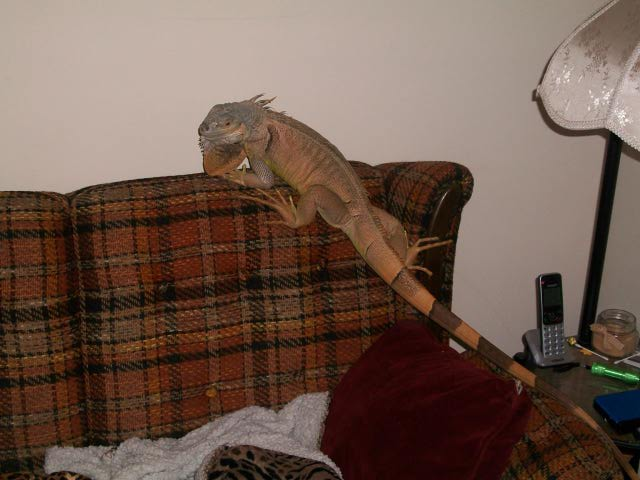 Green Iguana
QuestionJade
Jade
QUESTION: hello i Bough
Green Iguana
QuestionJade
Jade
QUESTION: hello i Bough
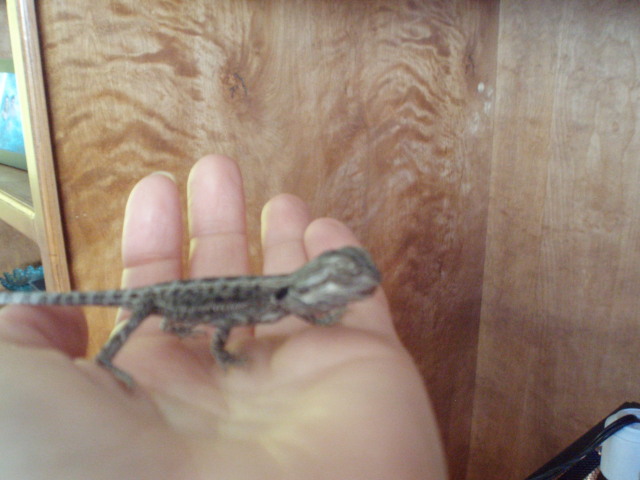 Potentially Sick Bearded Dragon - Please help
Question
Sick beardie
Hi. I have about a 3 months year
Potentially Sick Bearded Dragon - Please help
Question
Sick beardie
Hi. I have about a 3 months year
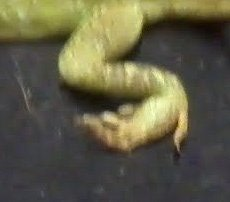 Water dragon toes
Question
kirk
Hello,
My water dragon is
Water dragon toes
Question
kirk
Hello,
My water dragon is
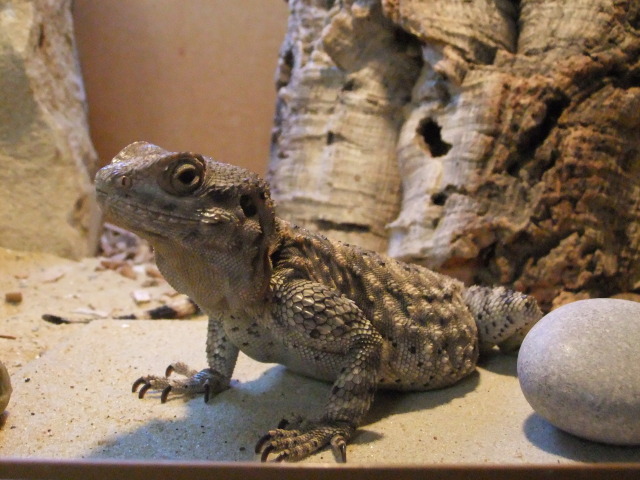 Painted Agama
QuestionPainted Agama
QUESTION: Hi i have a fema
Painted Agama
QuestionPainted Agama
QUESTION: Hi i have a fema
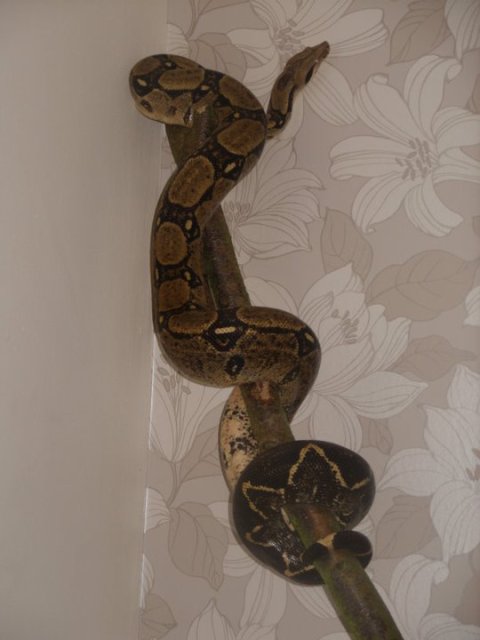 boa behaviour change
Question
Tink Our Snake
Hi, we have what we think is a
boa behaviour change
Question
Tink Our Snake
Hi, we have what we think is a